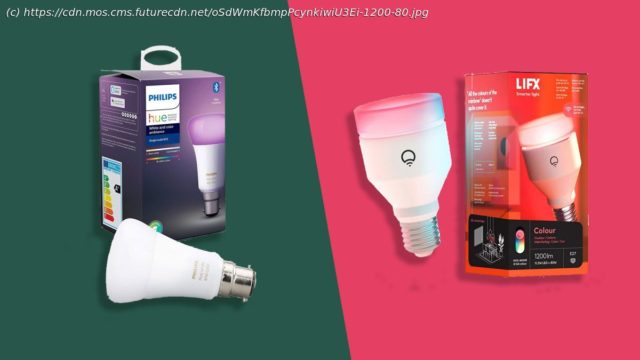Philips Hue and LIFX are big names when it comes to smart lighting, but which you should choose?
The best smart lights are one of the easiest ways to automate your home – they can be controlled by your smartphone, even when you’re miles away, and allow you to pick from millions of different colors or tones of white light. So, it’s no surprise they’ve rocketed in popularity – according to market research firm Statista, the smart lighting market is projected to be worth $105.2bn by 2023 – up from ‘just’ $8.68 billion in 2018. Philips Hue and LIFX are two of the biggest names dominating the smart lighting market right now, and if you’re considering kitting your home out with smart light bulbs, it makes sense to plump for one of these brands. However, it can be hard to decide which is best suited to you – not only do the bulbs connect to the internet in different ways, some of the features they offer differ too. It really depends on the type of lighting effect you want to create in your home – do you need simplicity or are you thinking about a long-term project to really build smart lighting throughout your life?, as to which one of these smart lighting systems you choose. Read on to discover how these two smart lighting systems compare – or, if you’ve already decided which of the two you wish to buy, check out the best prices right now for these smart lights: Before we begin, let’s talk about light – specifically in terms of how much comes out. The brightness of LED bulbs is measured in lumens, unlike incandescent bulbs which are measured in watts. The higher the wattage, the brighter the light but the more energy an incandescent bulb used. However as LED bulbs are more power efficient, more wattage doesn’t necessarily equate to a brighter light. As a guide an 800 lumen LED bulb gives off the same amount of light as a 60w incandescent bulb, while to replace a 40w bulb with light of a similar brightness, look for an LED option that offers 450 lumens. Both Philips Hue and LIFX offer plenty of choice for your smart lighting needs, so there’s sure to be a type of bulb or creative lighting option for all rooms in your home. Let’s start with Philips Hue: the brand offers a range of smart LED light bulbs designed to replace your existing bulbs, along with LED table and floor lamps, wall lights both for inside and outdoors, ceiling pendants, lightstrips and light bars, along with accessories such as motion sensors, dimmer switches and even a smart plug. In terms of brightness, Philips Hue bulbs and lights range from 500 to 1,600 lumens depending upon the particular model chosen. Initially, Philips Hue lighting needed the Philips Hue Bridge for everything smart. This hub relayed commands from your smartphone to the cloud and back to the bulbs so they could be controlled even when you weren’t at home, as the bulbs didn’t have Wi-Fi built into them. Now Philips has added Bluetooth to it’s smart light bulbs so if you’re in the same room as your Hue bulbs, you don’t need a Hue Bridge and can use the built-in Bluetooth instead, making the setup cost cheaper. However, you’ll still need a Bridge if you want to control lights in more than one room at a time, use accessories such as motion sensors to trigger the lights automatically or activate voice control, which might irritate when rivals like the LIFX don’t need that extra step. That said, the Philips Bridge creates a mesh network to connect the bulbs to the inter, which means they should suffer from less connectivity problems than bulbs like LIFX that connect directly to the Wi-Fi network – as those that are far away from the router may struggle to stay connected, and can’t be controlled when they have no internet access.






